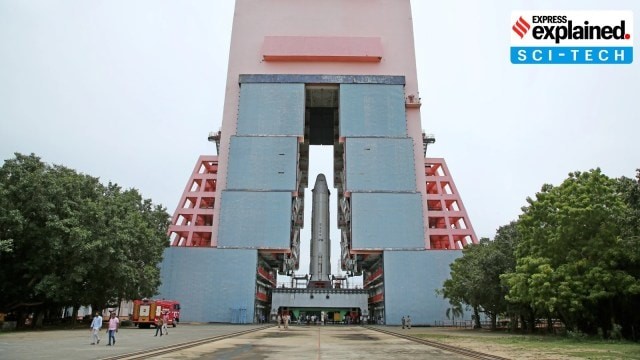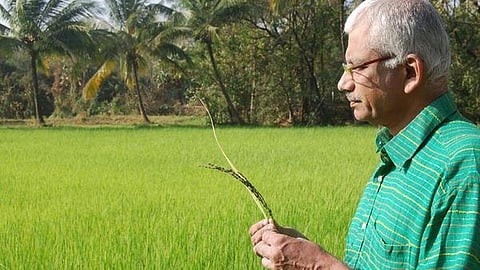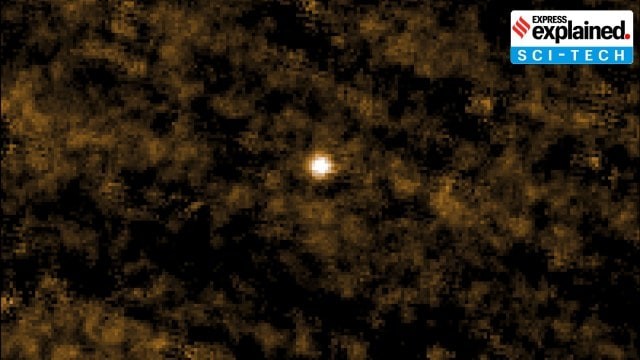



ISRO successfully launched its heaviest satellite, CMS-03, using the LVM-3 rocket, marking a milestone in India’s space program. The 4,410 kg multiband communication satellite was placed in a geosynchronous transfer orbit, reducing dependence on foreign launch services. This launch showcases India’s growing rocket capabilities, supports future human space missions, and highlights the increasing role of indigenous technology in space exploration.

Copyright infringement not intended
Picture Courtesy: Indian Express
On November 2, 2025, ISRO successfully launched the CMS-03 satellite using its most powerful rocket, the LVM-3 (previously known as GSLV Mk III). This mission marks the first time India has placed a satellite weighing over 4,000 kg into a geosynchronous transfer orbit (GTO) from Indian soil.
LVM-3, also known as GSLV Mk III, is ISRO’s heaviest and most powerful launch vehicle. It is designed to carry large satellites into geosynchronous transfer orbit (GTO) or low Earth orbit (LEO), and it is the backbone for India’s human spaceflight program (Gaganyaan).
Payload Capacity:
Propulsion System:
Versatility: Initially intended for GTO, LVM-3 has been adapted for LEO launches (e.g., OneWeb satellites) and will be upgraded for heavier payloads and human missions.
Geosynchronous Transfer Orbit (GTO): A Geosynchronous Transfer Orbit (GTO) is an elliptical orbit used to transfer a satellite from low Earth orbit (LEO) to geosynchronous orbit (GSO), where the satellite can match Earth’s rotation and appear stationary relative to the surface.
Low Earth Orbit (LEO): Low Earth Orbit (LEO) refers to an orbit relatively close to the Earth’s surface, generally at an altitude of 160 km to 2,000 km. Satellites in LEO orbit the Earth quickly, completing a full revolution in about 90–120 minutes.
Cryogenic Engine: A cryogenic engine is a type of rocket engine that uses liquefied gases at extremely low temperatures as fuel and oxidizer, usually liquid hydrogen (fuel) and liquid oxygen (oxidizer).
Technological Advancement
Economic Impact
Strategic and Security Implications
Scientific and Research Growth
Societal and Developmental Benefits
International Collaboration
Technical Challenges
Financial and Resource Constraints
Regulatory and Policy Issues
Human Resource Challenges
Environmental and Safety Concerns
Geopolitical and Competitive Challenges
India’s space program has achieved significant milestones with rockets like LVM-3 and missions such as CMS-03 and Gaganyaan. To sustain this growth, the focus must be on upgrading launch vehicles, promoting indigenous technology, preparing for human spaceflight, ensuring policy support, securing financial resources, and adopting sustainable practices. With coordinated efforts in these areas, India is well-positioned to become a global leader in space exploration, capable of handling heavier satellites, crewed missions, and strategic space initiatives.
|
Practice Question Q. “The successful launch of ISRO’s LVM-3 carrying the CMS-03 satellite marks a significant milestone in India’s space capabilities.” Discuss the multidimensional implications of this launch for India’s future space missions. In your answer, analyse the technological, economic, strategic, and policy aspects, and suggest the way forward for India’s space program. (250 words) |
LVM-3, formerly known as GSLV Mk III, is India’s heaviest launch vehicle capable of carrying up to 8,000 kg to Low Earth Orbit (LEO) and around 4,000 kg to Geosynchronous Transfer Orbit (GTO). It uses solid, liquid, and cryogenic stages.
CMS-03 is a multiband communication satellite weighing 4,410 kg, aimed at enhancing telecommunication and broadcasting services in India.
GTO is an elliptical orbit used to transfer satellites from Earth’s surface to geostationary orbit, where the satellite remains fixed relative to the Earth.





© 2025 iasgyan. All right reserved